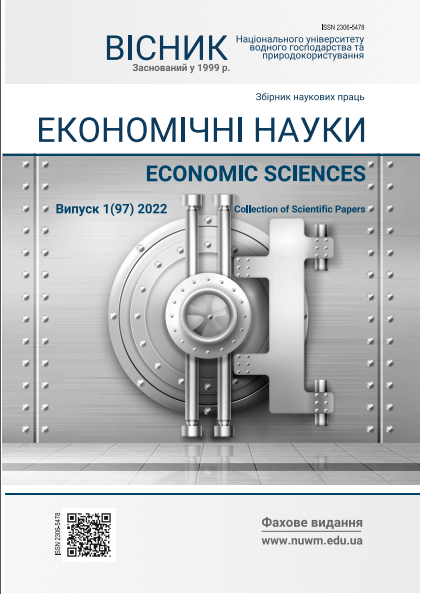INTEGRATING BASIS OF INFORMATION SUPPORT FOR DECISIONS FOR A STANDARDIZED MANAGEMENT SYSTEM
DOI:
https://doi.org/10.31713/ve120227Keywords:
basic categorical element, integration process, information block, integration sign, self-organizational sign, standard of integrated reporting, management system standards.Abstract
The article considers the theoretical and conceptual content of integrating the basis of information support for management decisions in the management system, which will introduce standards of management systems for the business entity. It was found that the main feature of this content is that the integrating basis is based on the connection of management system standards with the standard of integrated reporting. The latter occupies the highest level in the information structure of the management system. The information content of the decisions will be based on the information needs of the entity and stakeholders. The set of information blocks was structured. It is proposed to form such information blocks through the prism of common basic categorical elements in order to create the preconditions for the integration of information. Basic categorical elements are theoretically generalized and unified. They are prototypes of management categories Information blocks together with basic categorical elements and standards of management systems will serve as the subbasis of the integration basis. The conceptual content of the integration basis will be represented by the integration process of supporting management decisions. The process will be implemented on the specified subbasis. The mechanism of such a process involves the formation of integration signs business process management, combination with signs of self-organization management, as well as linking to the basic categorical elements, information blocks and standards of management systems. The mechanism will work during the design and implementation of decisions. The scheme of the integration process of acquiring features and informing about them is developed and illustrated by example. The above conceptual representation of the integration basis allows: identify combined integration and self-organizational signsthroughout the information structure of the management system; manage the formation of signs so as to achieve economic results and a statecommensurate with the sustainable development of the entity.References
ДСТУ ISO/IEC TR 10032:2012. Інформаційні технології. Еталонна модель керування даними (ISO/IEC TR 10032:2003, IDT). URL:
http://online.budstandart.com/ua/catalog/doc-page.html?id_doc=54418 (дата звернення: 05.03.2022).
Антоненко В. М., Мамченко С. Д., Рогушина Ю. В. Сучасні інформаційні системи і технології: управління знаннями : навч. посіб. Ірпінь : Національний університет ДПС України, 2016. 212 с.
Морзе Н. В., Піх О. З. Інформаційні системи : навч. посіб. Івано-Франківськ : «Лілея НВ», 2015. 384 с.
Павлиш В. А., Гліненко Л. К., Шаховська Н. Б. Основи інформаційних технологій і систем : підручник. Львів : Львівська політехніка, 2018. 620 с.
International Integrated Framework Reporting. URL:
https://www.integratedreporting.org/resource/international-ir-framework/ (дата звернення: 05.12.2021).
Методичні рекомендації зі складання звіту про управління : наказ Міністерства фінансів України від 07.12.2018 № 982. URL: https://zakon. rada.gov.ua/rada/show/ v0982201-18#Text (дата звернення: 19.03.2022).
Value Reporting Foundation. URL: https://www.valuereportingfoundation.org/# (accessed on: 21.03.2022).
HIGH-LEVEL STRUCTURE – HLS. URL: https://www.iso.org/management-system-standardslist.html (accessed on: 01.02.2022).
GUIDANCE ON INTEGRATED MANAGEMENT SYSTEM STANDARDS JUST UPDATED By Clare Naden on 15 November 2018. URL: https://www.iso.org/ news/ref 2347.html (accessed on: 01.02.2022).
Цікало Є. Формування інтеграційного базису системи управління суб’єкта господарювання. Формування ринкової економіки в Україні. 2016. Вип. 35. Ч. 2. С. 287–293.
Цікало Є. Функціонування і розвиток інтегрованих систем управління в умовах динамічних змін. Вісник Львівського університету. Сер. Економічна. 2016. Вип. 53. Ч. 1. С. 187–195.

